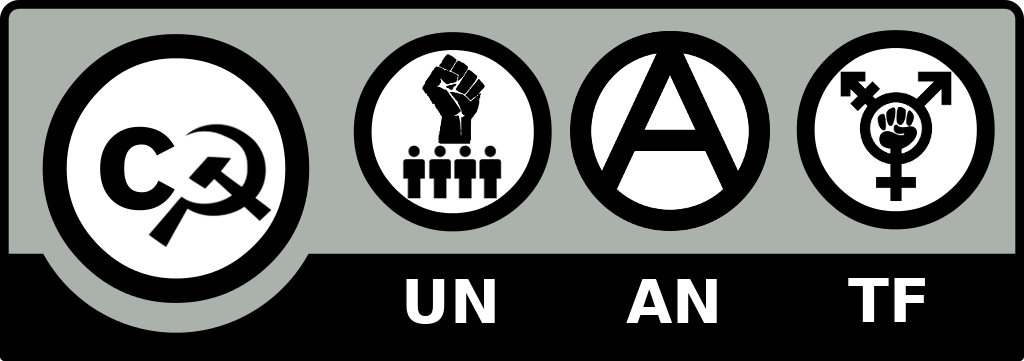I love Italian intellectuals. And Italian intellectuals love writing manifests. Therefore, I love Italian manifests.
Perhaps this is because I cut my professional teeth on both. Before I got involved in New York’s digital media culture via “Silicon Alley”, I studied in Italy as an undergrad and worked/researched as a post-grad Fellow in a museum in Venice, Italy, which houses a large collection of Italian futurist painters. I then editorially assisted a radical, Italian investigative reporter for Italy’s largest newsweekly magazine, L’Europeo (Rizzoli). Transitioning from the “old” or tradition/legacy media to the “new” digital media, I “produced culture” sometimes as a “free labor NetSlave/NetPioneer” and sometimes for a salary “hyper-compensated by the capricious logic of venture capitalism.” [p. 48, Terranova]. So I found myself relating to Terranova and Lazzarato on a personal and professional level while reading them, particularly when Terranova mentioned Gerry Laybourne, who is an alumna of my alma mater, and with whom I’ve had digital media-related business and social meetings.
Tiziana Terranova, whose surname interestingly translates to “new world”, is an Italian theorist and activist. Her work focuses on the effects of information technology on society through such concepts as digital work. She lectures at the Univ. of Naples and wrote “Free Labor: Producing Culture for the Digital Economy” in 2000.
Maurizio Lazzarato is an Italian sociologist and philosopher who resides in Paris. He was an activist in the worker’s movement in Italy in the late 1970’s and wrote “Immaterial Labor” in 1996.
Both “Free Labor” and “Immaterial Labor” read to me as manifests and Terranova gives a significant nod to Donna Haraway’s “Cyborg Manifesto” when she writes that since its publication in 1985, the “triangulation [of cybernetics, labor and capital] has become even more evident”. [p. 34, Terranova]
I’m glad I read Terranova first as she refers to and cites Lazzarato which made reading his “Immaterial Labor” a bit easier to grasp. Both authors are also writing pre-Web 2.0 and Terranova accurately identifies that the “New Web” is made of the big players rather than the unemployed, the dreamy and the iconoclastic who went to the Old Web as a place to reinvent themselves. [p. 52, Wired in Terranova] (I can attest to the accuracy of this, paralleled in my own career, as an Indie Producer of a web pioneering netcast from 1996-98 at the iconoclastic pseudo.com and then as an Associate Producer at Beliefnet.com in 2000 with my hire date the very week that AOL bought Time Warner–and we all know where that wound up!)
To summarize the highlights of Terranova’s and Lazzarato’s manifests, both are quite complex and reference the Marxian concepts from his Grundrisse, which the autonomists adopted. Grundrisse translates as “Outline” and its full title is “Fundamentals of Political Economy Criticism”. The work was unfinished by Marx, and yet its concepts were still used in the Italian workers’ movement.
Terranova seeks to “map the way in which the Internet connects to the [Italian] autonomists’ ‘social factory’ [defined as] a process whereby work has shifted from factory to society.” [p. 33, Terranova] She contends that “cultural and technical work is central to the Internet and is also a widespread activity throughout capitalist societies [arguing] that such labor is not exclusive to the so-called knowledge workers, but is a pervasive feature of the postindustrial economy.” [p. 34-35, Terranova].
Before citing Lazzarato, Terranova argues, and urges, that we must ask WHO is participating in the “digital economy” before we can pass judgment on it. [p. 40, Terranova] To answer this, she found it useful to think in terms of what the Italian autonomists and especially Lazzarato describe as “immaterial labor” [p. 41, Terranova] which is labor that produces the informational and cultural content of the commodity. [p. 1, Lazzarato].
Lazzarato furthers the concept: “immaterial labor produces a social relationship (a relationship of innovation, production, consumption) [but] only if it succeeds in this production does its activity have an economic value.” [p. 4, Lazzarato] He specifies: “immaterial labor produces first and foremost a social relation – it produces not only commodities, but also the capital relation.” [p. 7, Lazzarato]
Lazzarato elaborates: “immaterial workers (those who work in advertising, fashion, marketing, television, cybernetics, and so forth) satisfy a demand by the consumer and at the same time establish that demand…immaterial labor produces subjectivity and economic value at the same time [demonstrating how capitalist production has invaded our lives.]” [p. 7, Lazzarato]
I must admit, I am lost when he then arrives at his main hypothesis: “the process of the production of communication tends to become immediately the process of valorization.” [p. 8, Lazzarato]
Can you shed light on this and help unpack and/or break Lazzarato down?
Meanwhile, back to Terranova who asserts that “the digital economy is the fastest and most visible zone of production within late capitalist societies, with reliance on mostly ‘immaterial products’ (commodities whose essence is said to be meaning (or lack of) rather than labor.” [p. 47, Terranova] Such commodities result from “affective labor”. Here’s a video primer from Audiopedia:
https://youtu.be/m2eygfkRFvs
Do you agree or disagree with Terranova’s position on affective production?
The heart of Terranova’s argument/essay/manifesto is “the over reliance of the digital economy on free labor…is part of larger mechanisms of capitalist extraction of value which are fundamental to late capitalism as a whole” [p. 51] Both Terranova and Lazzarato are adept at pointing out dualities, as Terranova continues, “the field [of late capitalism] both sustains free labor and exhausts it.” [p. 51]
I particularly liked it when Terranova observed that “[what] the digital economy…really cares about is an abundance of production, an immediate interface with cultural and technical labor” which has resonance for me with Lazzarato’s concept of immaterial labor producing a social relation.
But then, Terranova, in pointing out the most significant duality, asks in her Conclusion, “does the Internet embody a continuation of capital or break with it?” [p. 54, Terranova] She concludes “neither” which I found anti-climactic to both her essay and my experience reading it. She concludes that “rather, it’s a mutation of a wide-spread cultural and economic logic” [p. 54]
I do appreciate, however, that she maturely recognizes that “in this context, it is not enough just to demystify the Internet as the latest capitalist machination against labor.” [p. 54]
Do you find Terranova’s conclusion anti-climactic also or not? If not, why not?
I find it noteworthy that while Lazzarato uses the term “content” in 1996, Terranova appears to avoid it in 2000. She only uses it when citing Lazzarato and then in referring to “web content” and “user-based content” toward the end of her essay. This is curious to me, as this was a red-hot media keyword/buzzword particularly in the years 1996-2000.
I love Italian intellectuals.




 As a theatre-major student, I previously commented on Zhang’s post about Brazilian theatre practitioner
As a theatre-major student, I previously commented on Zhang’s post about Brazilian theatre practitioner 
